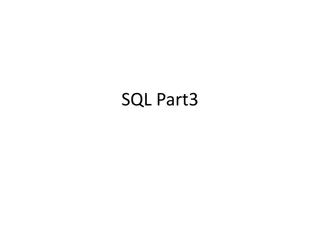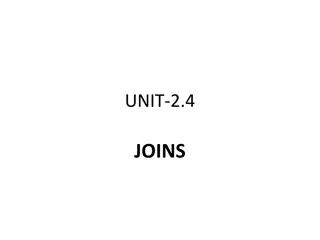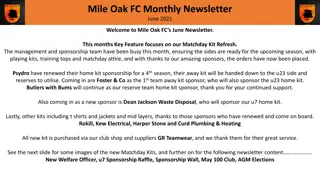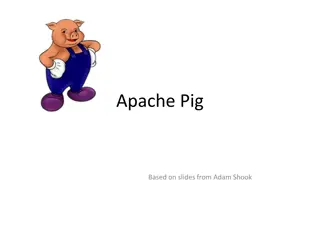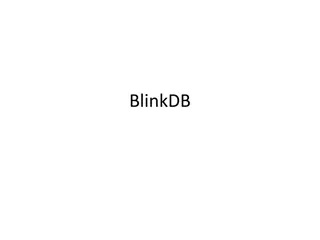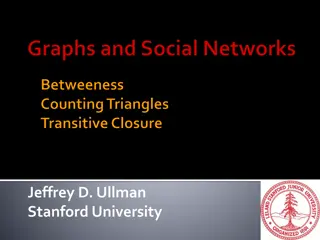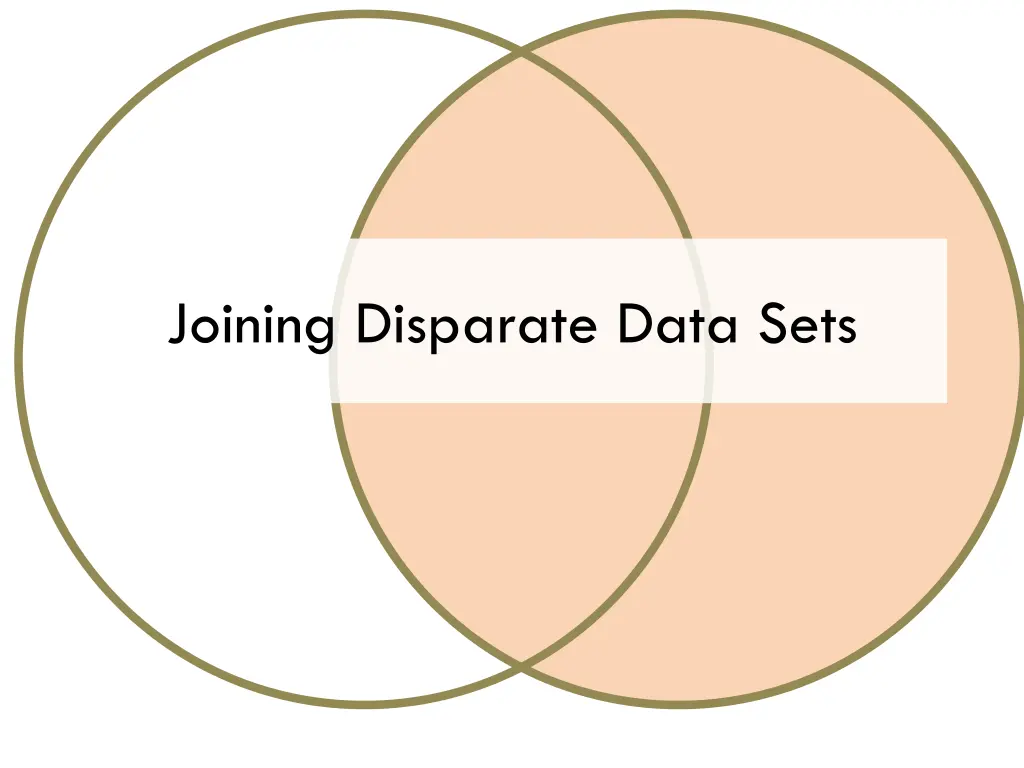
Handling Disparate Data Sets in Data Science
Learn how to merge and join disparate data sets with common keys in data science projects. Explore solutions for addressing mismatched data sets and performing inner joins to create new data structures. Dive into practical examples using R programming for data manipulation and analysis.
Download Presentation

Please find below an Image/Link to download the presentation.
The content on the website is provided AS IS for your information and personal use only. It may not be sold, licensed, or shared on other websites without obtaining consent from the author. If you encounter any issues during the download, it is possible that the publisher has removed the file from their server.
You are allowed to download the files provided on this website for personal or commercial use, subject to the condition that they are used lawfully. All files are the property of their respective owners.
The content on the website is provided AS IS for your information and personal use only. It may not be sold, licensed, or shared on other websites without obtaining consent from the author.
E N D
Presentation Transcript
Merging Data Problem: I have two data sets One is biological information One is physical information They have a common key e.g., Lat/Long
The data > hemlock_data <- read_excel("./hemlock.xlsx") > Source: local data frame [98 x 11] > str(hemlock_data) Classes tbl_df , tbl and 'data.frame': $ Stand : chr $ Year : num $ Latitude : num $ Longitude : num $ Live BA : num $ Dead Hem BA : num $ Hem Vigor : num $ Hem Den : num $ Dead Hem Den : num $ Tree Den : num $ Borer Density: num 1.15 1.81 925 100 1225 0 98 obs. of 11 variables: "Athol 1" "Athol 2" "Athol 4" "Athol 6" ... 2003 2003 2003 2003 2004 ... -72.2 -72.2 -72.2 -72.2 -72.1 ... 42.5 42.5 42.5 42.6 42.6 ... 36.3 31.2 35.9 32.6 23 ... 0.46 0.46 0 0 0 2.87 0 0 0 1.15 ... 1.6 1.18 1.47 1.86 1.25 1.9 1.91 1.56 1 1.81 ... 1450 1250 900 725 600 725 825 450 400 925 ... 50 50 0 50 0 150 50 50 0 100 ... 2125 1725 1700 1100 1075 ... 0 0 0 0 0 0 0 0 0 0 ...-72.42921 42.32916 36.16
Environmental Information > hemlock_sites <- read_excel("./hemlock.xlsx", sheet=2) > str(hemlock_sites) Classes tbl_df , tbl and 'data.frame': $ Stand : chr $ Year : num $ Mapped Code: chr $ Aspect : num $ Slope : num $ Latitude : num $ Longitude : num $ Elevation : num $ Area : num $ Humus : num $ Logged : num $ Rand : num 111 obs. of 12 variables: "Athol 1" "Athol 2" "Athol 3" "Athol 4" ... 2003 2003 2003 2003 2003 ... "A" "A" "A" "B" ... 213.2 357 292.5 80.5 227.5 ... 3.8 27.83 23.83 8.78 12.17 ... -72.2 -72.2 -72.2 -72.2 -72.2 ... 42.5 42.5 42.6 42.5 42.6 ... 269 220 231 247 233 ... 35.8 36.6 33.7 94.7 40.7 ... 9.9 5.92 5.58 6.89 3.71 5.25 7.33 12.4 6.75 8.85 ... 1 1 1 1 1 1 1 0 1 1 ... NA NA NA NA NA NA NA NA NA NA ...
The problem > nrow(hemlock_data) [1] 98 > nrow(hemlock_sites) [1] 111
Inner Join Creates new Data with rows that exist in both data sets
Reducing Data in Inner Joins > hem_inner <- inner_join(hemlock_data, hemlock_sites) Joining by: c("Stand", "Year", "Latitude", "Longitude") > nrow(hemlock_data) [1] 98 > nrow(hemlock_sites) [1] 111 > nrow(hem_inner) [1] 87
Left Join: Retain Rows with NAs in First Dataset Good when too much descriptive information available > hem_left <- left_join(hemlock_data, hemlock_sites) Joining by: c("Stand", "Year", "Latitude", "Longitude") > nrow(hem_left) [1] 98
Right Join: Retain Rows with NAs in Second Dataset Good when you second dataset contains key information, and first is ancillary > hem_right <- right_join(hemlock_data, hemlock_sites) Joining by: c("Stand", "Year", "Latitude", "Longitude") > nrow(hem_right) [1] 111
Full Join: Bring it All Together Good when you want to see the full dataset > hem_full <- full_join(hemlock_data, hemlock_sites) Joining by: c("Stand", "Year", "Latitude", "Longitude") > nrow(hem_full) [1] 122
Filtering Joins I only want data that matches a set of criteria Like outer joins with a second na.omit step
Semi Join: X %in% Y Good before data pre-processing > hem_semi <- semi_join(hemlock_data, hemlock_sites) Joining by: c("Stand", "Year", "Latitude", "Longitude") > nrow(hem_semi) [1] 87
Anti Join: X NOT %in% Y Good for diagnosing data mismatch > hem_anti <- anti_join(hemlock_data, hemlock_sites) Joining by: c("Stand", "Year", "Latitude", "Longitude") > nrow(hem_anti) [1] 11
Exercise 1 You want to plot a map of the sites You want size of points to be area You want color of points to be dead Hemlock area
Exercise 2 Use ggplot2 to plot a map of the sites BUT you want to show which sites are missing environmental data AND you want to show which sites are missing biological data (this might be more than one plot and more than one data join!)











